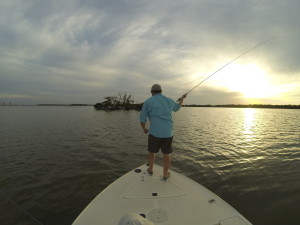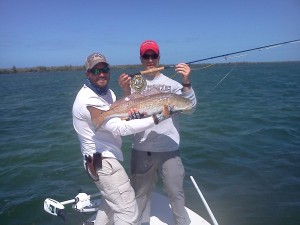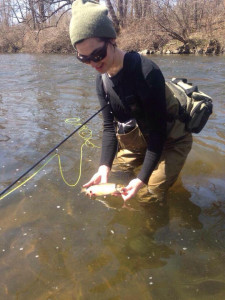3 Fundamental Fly Fishing Tips for Beginners
By Debbie Hanson
Feb 05, 2015
Fly fishing isn't just for anglers who live near winding mountain streams or steady flowing rivers and want to catch trout on a nymph.
Fly fishing isn't just for anglers who live near winding mountain streams or steady flowing rivers and want to catch trout on a nymph. You can also fly cast off of the shoreline in Florida for snook or off the banks of a lake in North Carolina for smallmouth bass.


If you've been fishing with spinning or bait-casting gear for years, fly fishing is a great way to challenge yourself, learn new skills, and expand upon your versatility as an angler.
Here are three great fly fishing tips for those who are just starting out:
-
When selecting your first fly rod, consider where you plan to fly fish and what species you want to target. If you will be fly fishing on small freshwater streams, lakes or ponds, a 6 to 8-foot long rod should suit your needs. However, if you plan to go fly fishing on large freshwater rivers or do any saltwater fly fishing, a 9-foot rod would be a better choice (when you have the space to use it, a longer rod gives you better control over your line). The weight of the rod you select will depend on the species you are fishing for and the size of the flies you will be using. If you are fishing for large fish using large flies, you'll need a heavier rod and line to cast larger flies. For example, if you plan to fish for panfish, a 3 or 4-weight fly rod would be a good choice; however, if you will be saltwater fly fishing for snook or redfish, you'll probably want to use an 8 or 9-weight rod.


-
Practice, practice, practice. If you are accustomed to fishing with spinning or baitcasting gear, it will take you some time to get used to fly casting with the weight of the line versus the weight of your lure or bait, as you would with spinning or bait-casting gear. Practice your fly casting outdoors in your yard or in an empty lot (using a yarn fly without a hook) and focus on short, but efficient casts to start.
-
Learn about the different types of flies and when to use which type. The majority of flies you'll use when fly fishing can be grouped into one of three different fly types. There are dry flies that float on the surface (such as caddis flies, mayflies and midges), wet flies or nymphs (represent insects in the nymph or early stage of life) that are fished beneath the surface, and streamers (mimic swimming forage such as baitfish, leeches, crayfish) that are larger in size and are fished on an active retrieve.


Have more questions about learning how to fly fish, but aren't sure where to get quick answers? Read through a list of the most commonly asked questions about fly fishing, and then start planning your first fly fishing trip!









